30+ Little-Known Facts About RVs
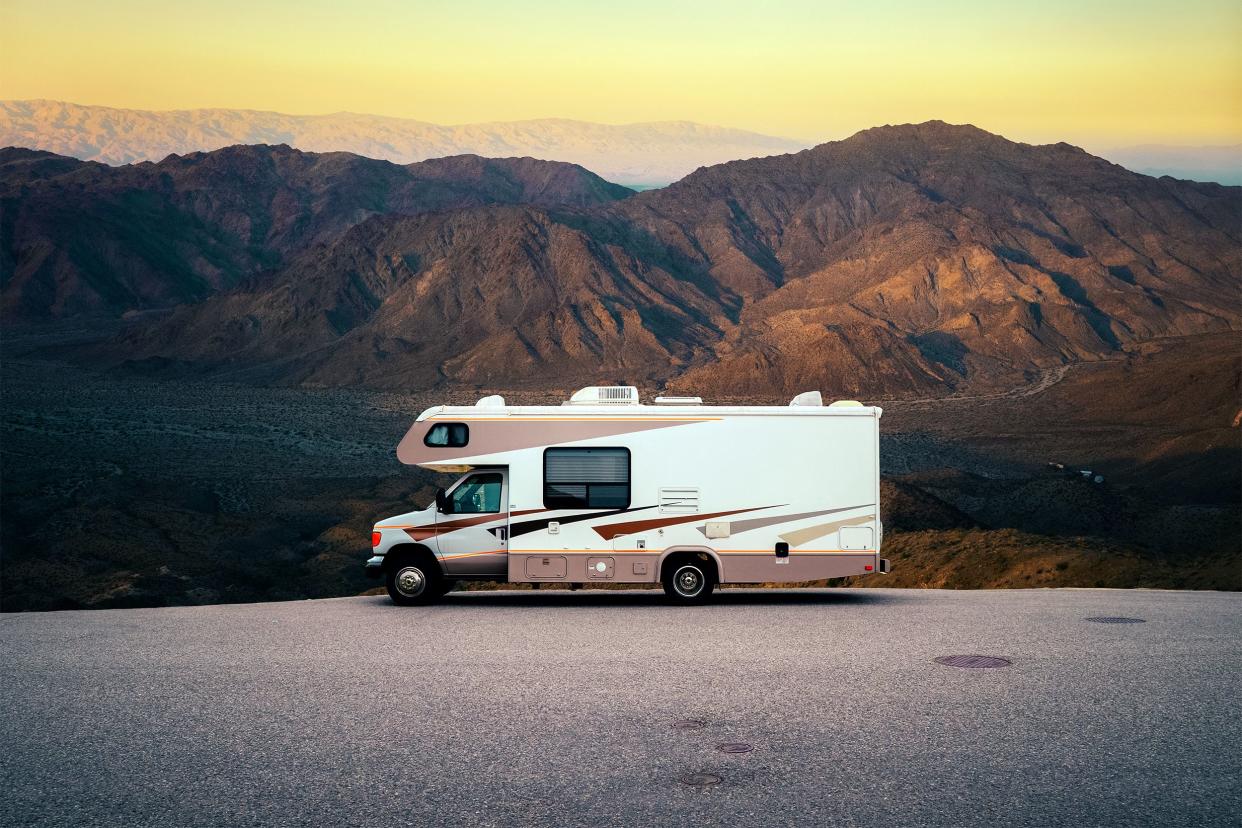
The Big RV Picture
Even pre-pandemic, the RV industry was experiencing consistent growth. In the eight years leading up to 2017, sales expanded each year. What’s more, according to a 2022 economic study from the RV Industry Association, the recreational vehicle industry has hit a staggering $140 billion total economic impact in the U.S. annually, from RV sales to industry jobs to campgrounds and travel.
Here’s a closer look at some of the little-known, colorful, or otherwise intriguing facts about the RV industry, culled from industry reports, association websites, and statistics research.
Curious to learn some RV lingo before you hit the road? Be sure to read Boondocking and Other RV Terms You Need to Know.
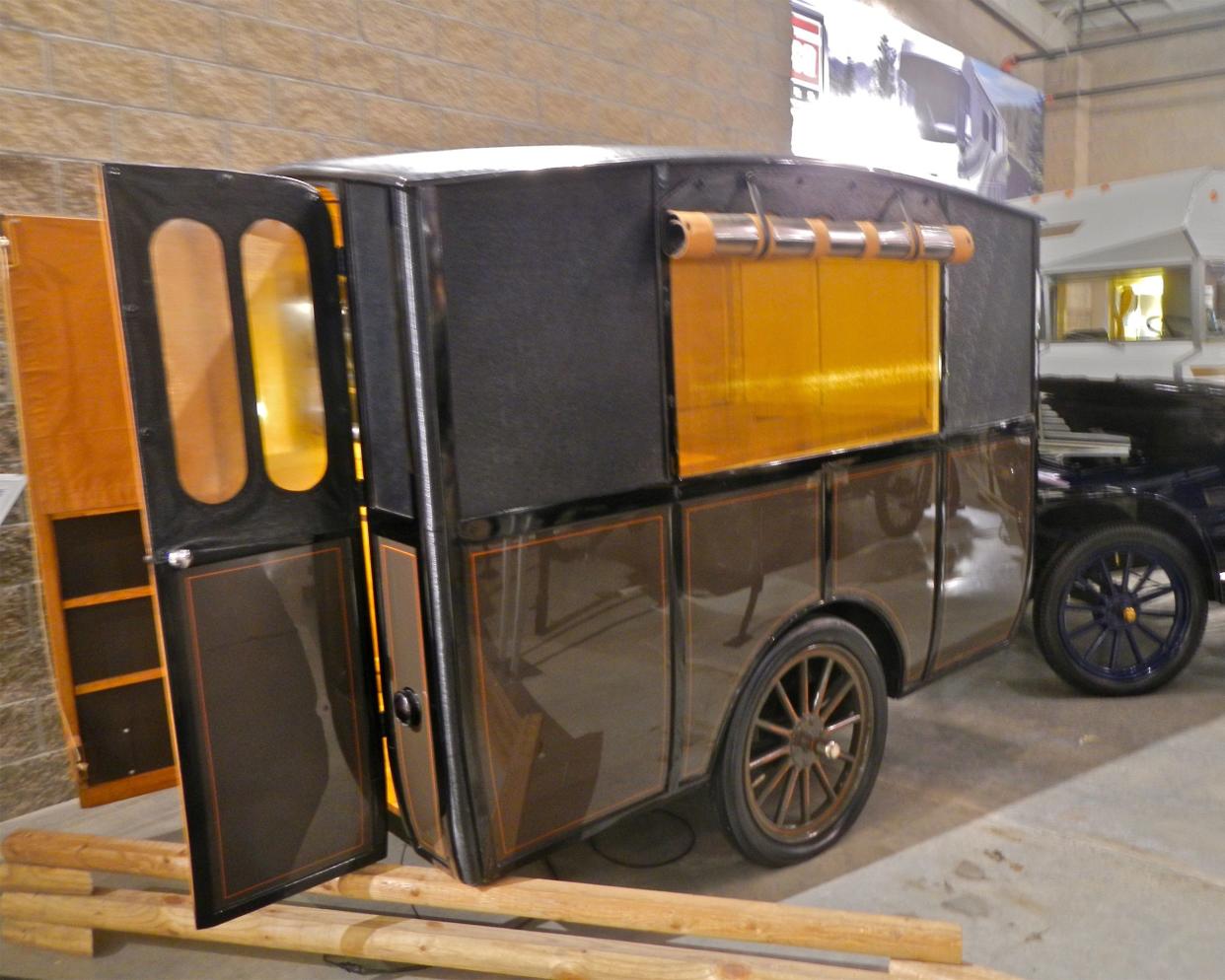
1. It All Began in 1910
Motorized campers began to appear on the scene as early as 1910. That’s when the first “auto campers” were created and made commercially available. By many accounts, these vehicles, sometimes also called “camping trailers,” were the predecessors of today’s ubiquitous RVs. However, they were hardly as luxurious as modern offerings. In fact, they offered minimal comforts.
Related: From Covered Wagon to Winnebago: The Evolution of the RV
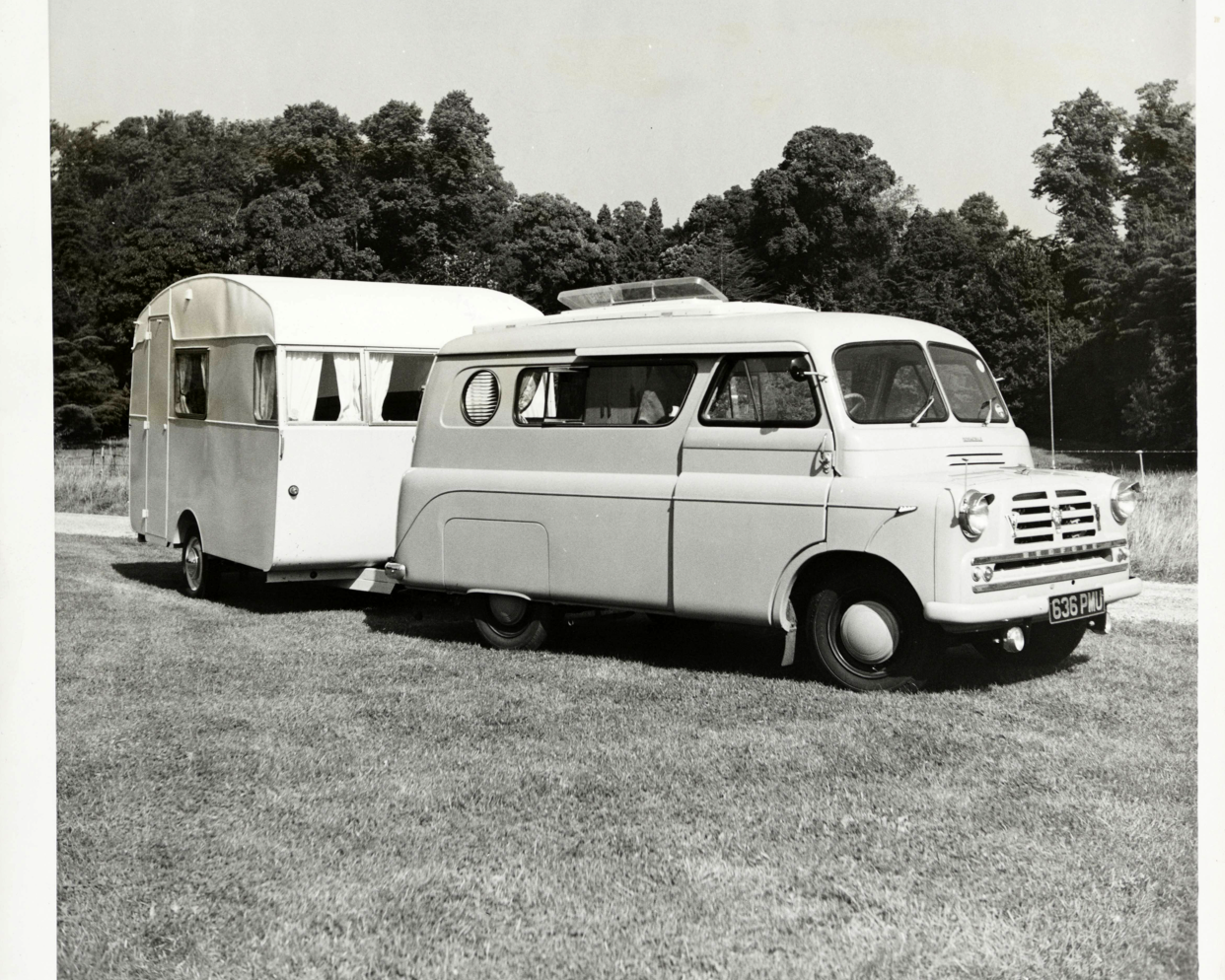
2. The RV Industry Exploded in the 1950s
By the 1950s, the industry truly started to come into its own, offering everything from do-it-yourself RVs to luxe 30-foot vehicles. It was around this era that many of today’s well-known RV brands established their businesses.
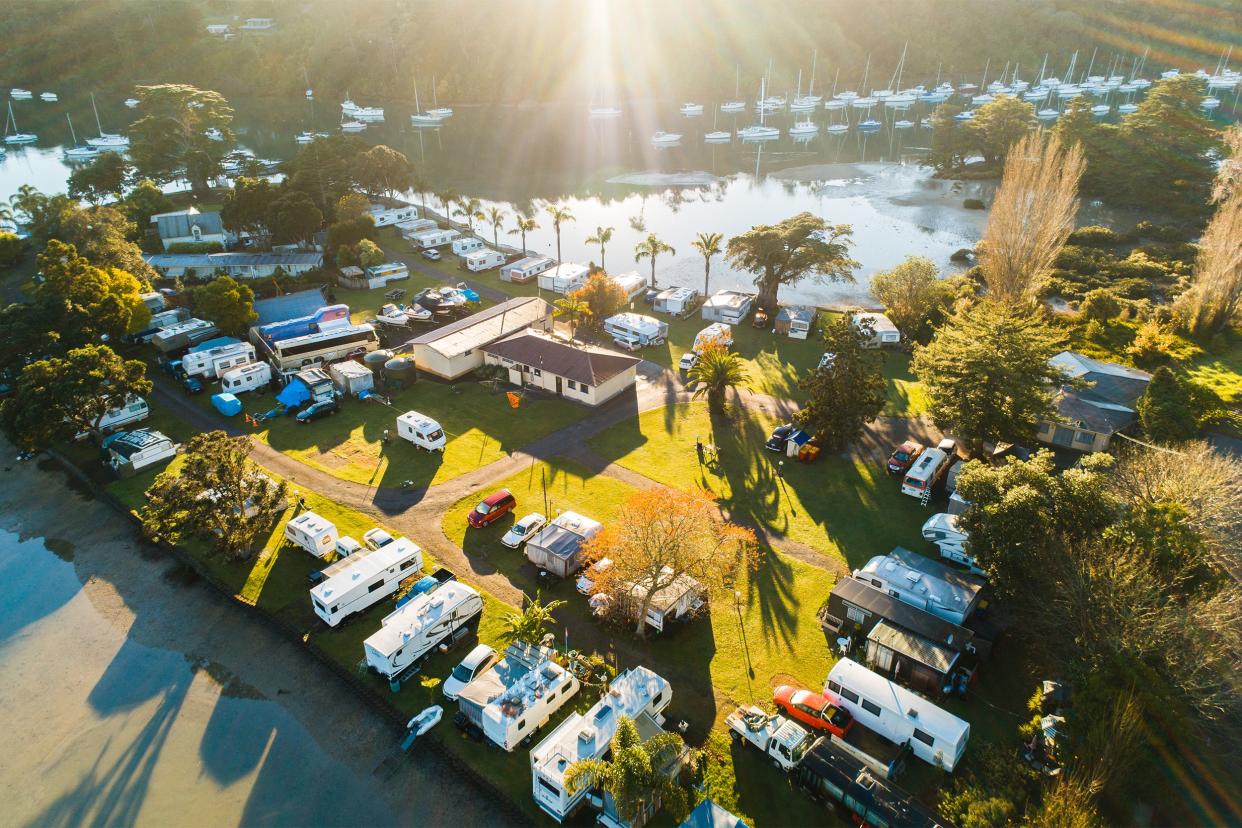
3. Millions of People Go RVing
Hitting the open road in an RV is no small pastime. In fact, 65 million Americans plan to take an RV vacation this year, according to the RVIA. That figure represents a significant share of the overall number of people who go camping in this country. For instance, in 2020, there were 86.1 million active camper households in the U.S. A staggering 10.1 million families camped for the first time in 2020, according to the Kampgrounds of America. The best available estimates suggest that about 1 million Americans RV full-time.
Related: What It's Really Like to Retire in an RV
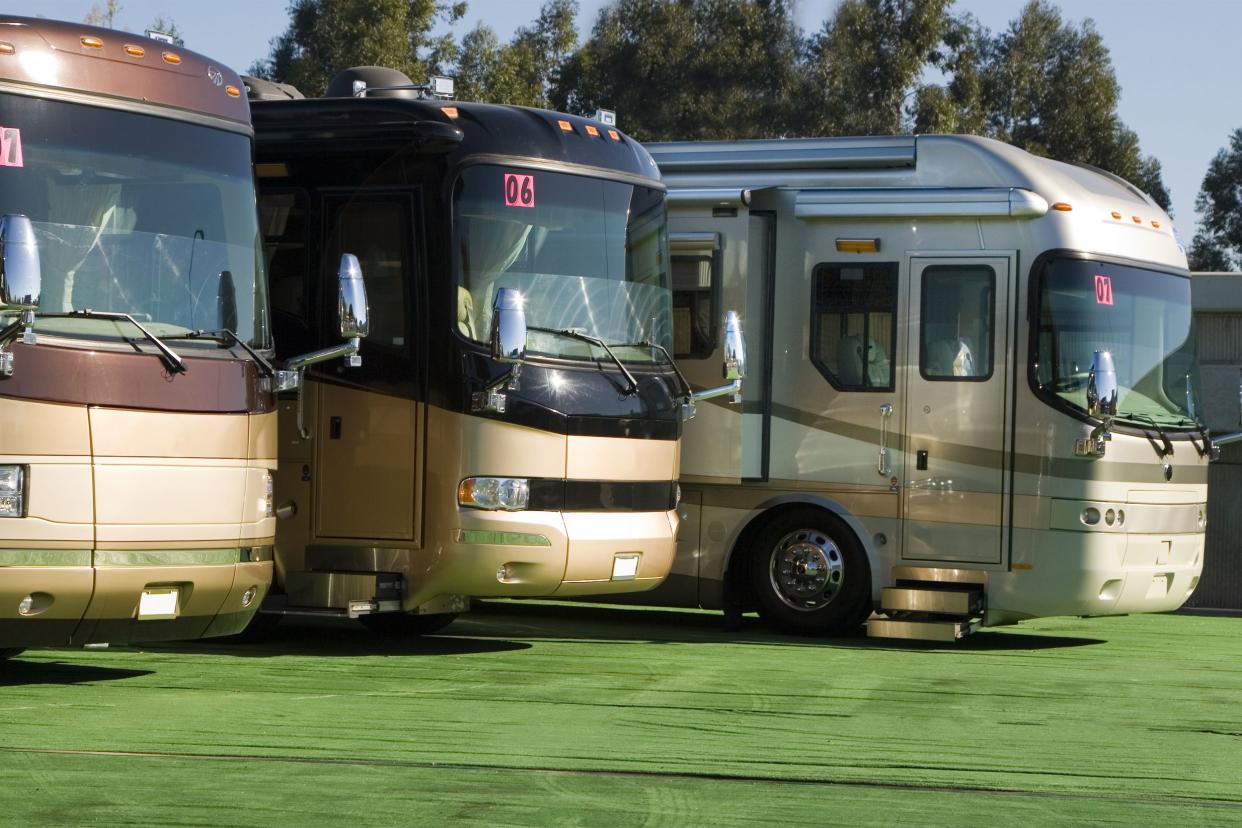
4. 2017 Was a Record-Breaking Year But It Was Soon Topped by the Pandemic
The RVIA began collecting data more than 40 years ago, but it was in 2017 that RV shipments exceeded the half-million mark for the first time. Wholesale shipments reached 504,599, which was a significant increase over 2016 when 430,691 RVs were shipped by manufacturers to dealers. Then in 2020 and 2021, the pandemic gave thousands of people RV fever. Sales grew steadily in 2020 and were over 600,000 in 2021, according to Forbes.
For more great RV articles, please sign up for our free newsletters.

5. An Increasing Number of Young People Are RVing
While it may seem like RV vacationers are mostly families and boomers, younger generations are buying RVs these days in increasing numbers. A study completed by Ipsos on behalf of Go RVing showed the highest interest among consumers ages 18 to 34 years. “Millennials and Gen Zers are becoming RVers for life, with an impressive 84% of 18-to-34-year-olds planning to buy another RV in the next five years,” the study says.
Related: 22 Reasons Why #VanLife Might Not Be for You
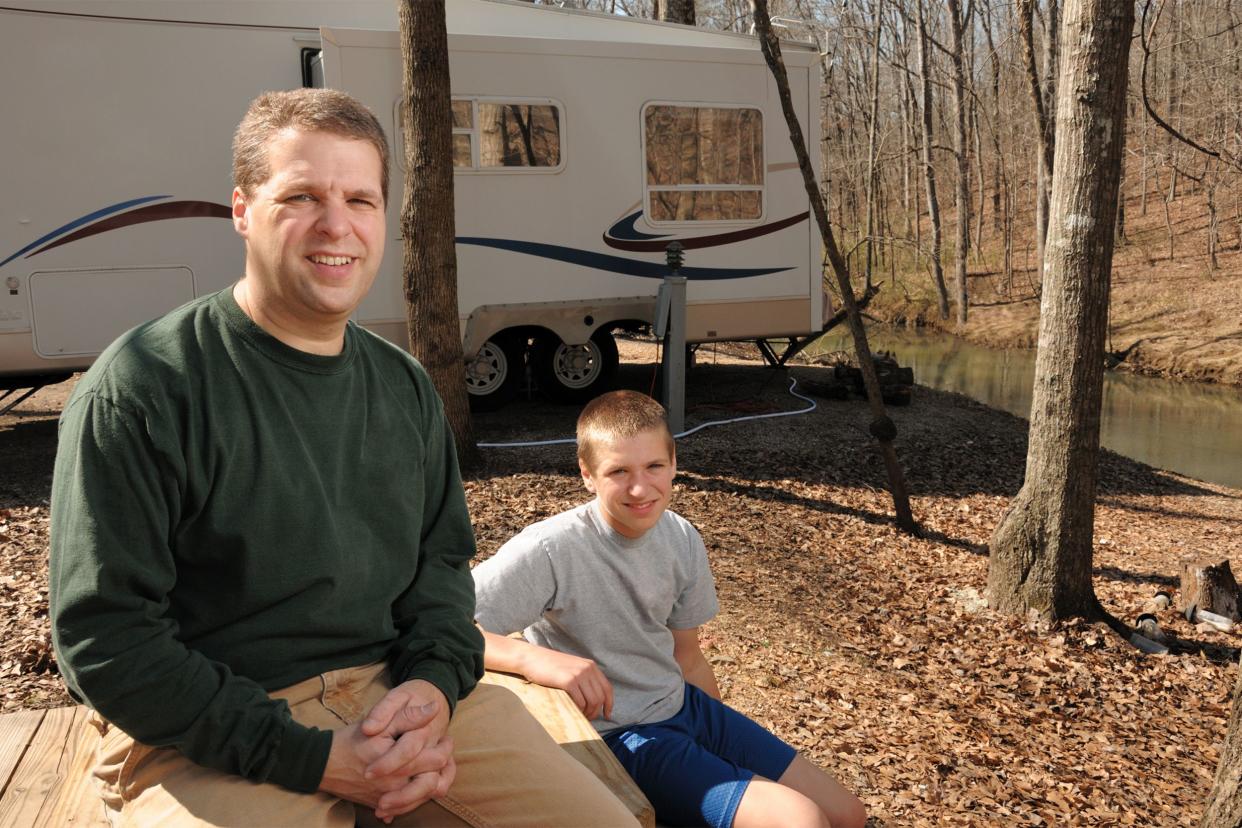
6. The Typical RV Traveler Hits the Road for Three Weeks Each Year
While younger RV owners may be growing, the average owner, according to RV Life, continues to be around 48 years old. These individuals are typically married, have an annual household income of about $68,000, and travel about three to four weeks each year.
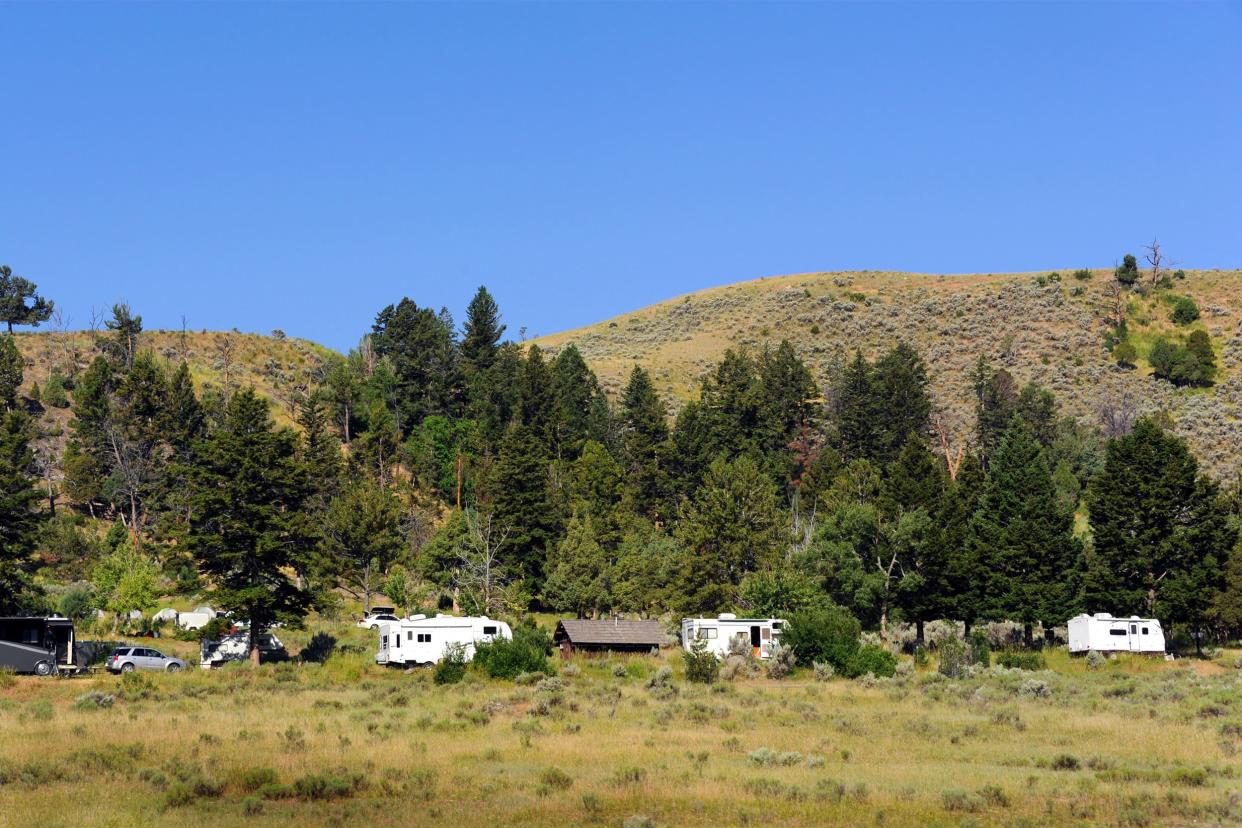
7. Yellowstone Is the Most Popular Destination for RV Travelers
It should come as no surprise that America’s stunning national parks are a magnet for RV travelers. The most popular park among the RV travel set is Yellowstone, according to RV Share’s 2022 Travel Trends Report. The rest of the top national parks include the Grand Canyon, Zion, Arches, the Great Smoky Mountains, and Glacier.
Considering renting an RV for your next trip? Choose from a wide variety of options at the popular rental site RVshare.
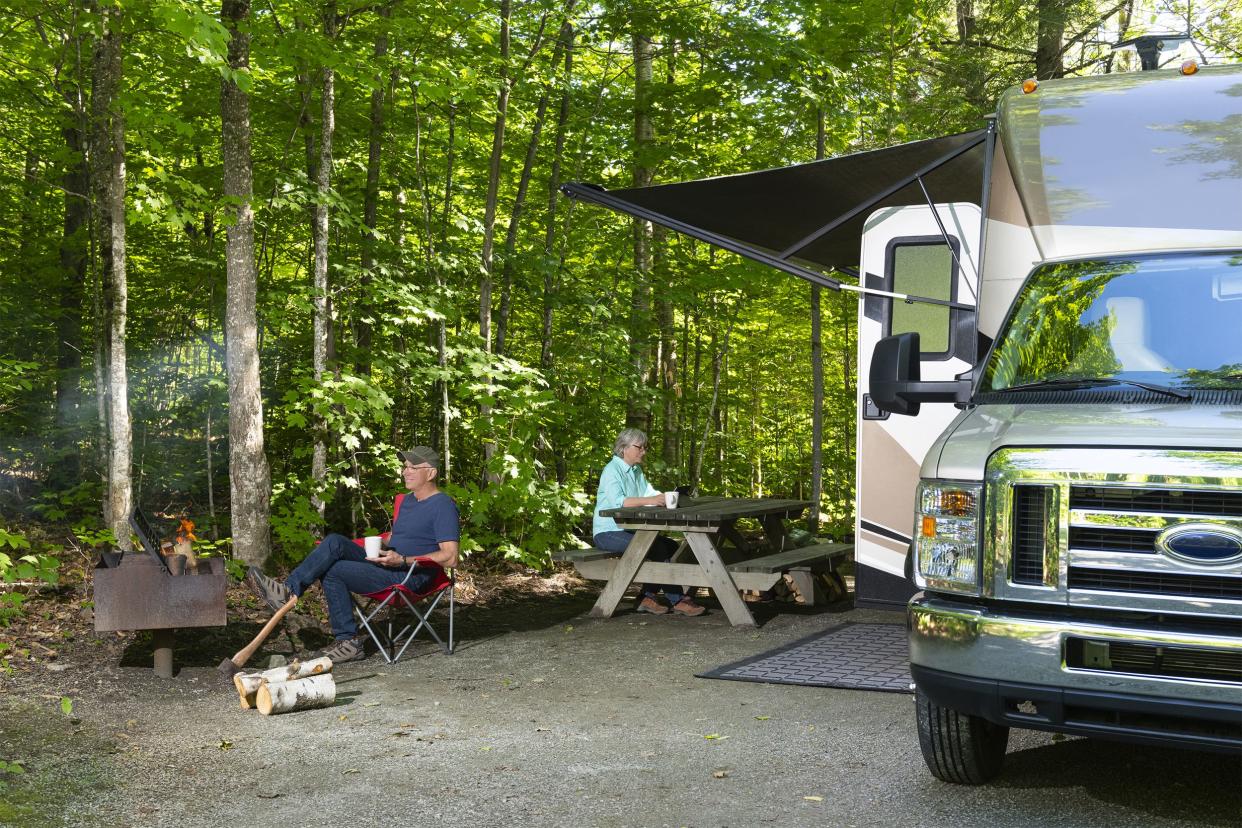
8. There Are Thousands of Places to Camp
RV travelers should never have trouble finding a place to spend the night. According to a Wandering RV report, there are about 16,000 campgrounds and parking facilities (public and private) that allow RV camping throughout the country.
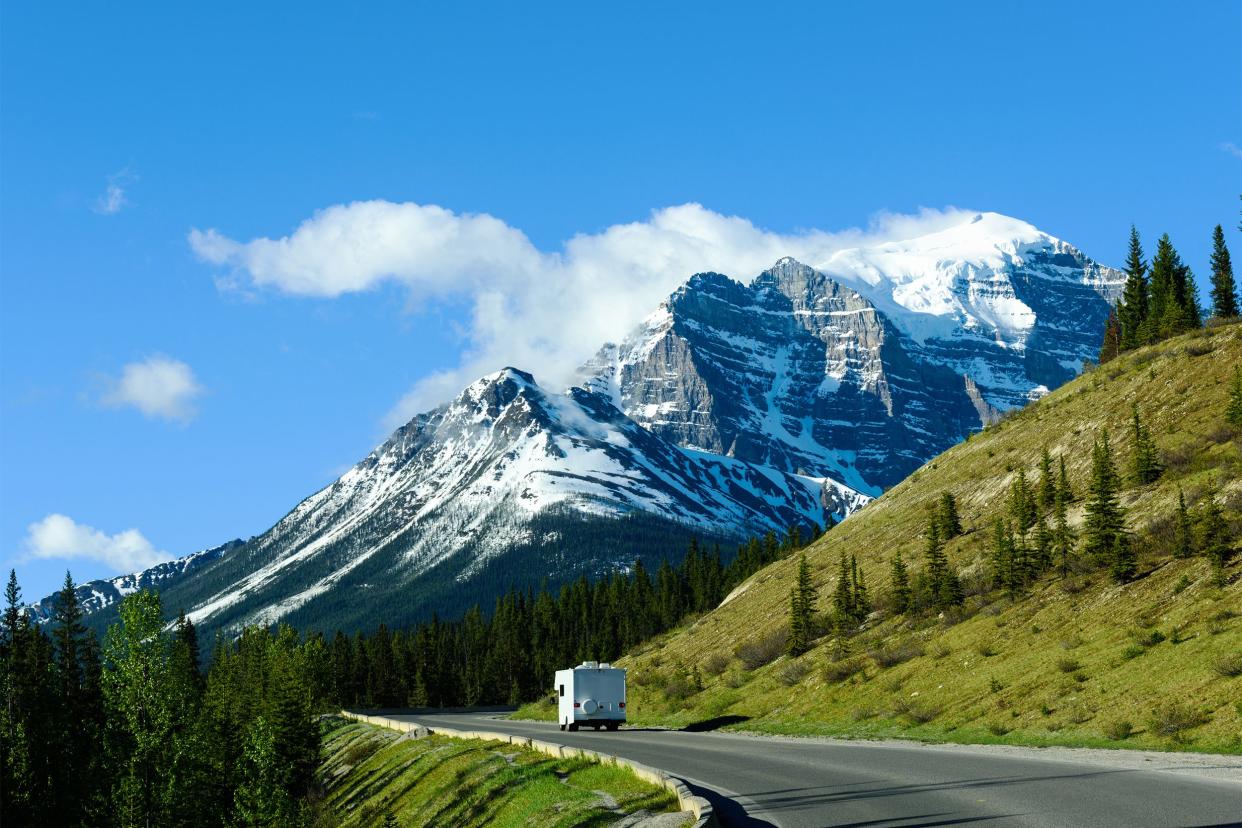
9. RV Camping Is Popular in Canada and Asia, Too
That #RVLife is apparently not just a beloved American pastime. Between 2012 and 2017, U.S. RV exports to China, Korea, and Japan totaled over $258 million, according to a 2018 RV Industry Association report. The RV industry in Canada meanwhile generates about $7 billion a year in sales annually, according to Wandering RV’s report.
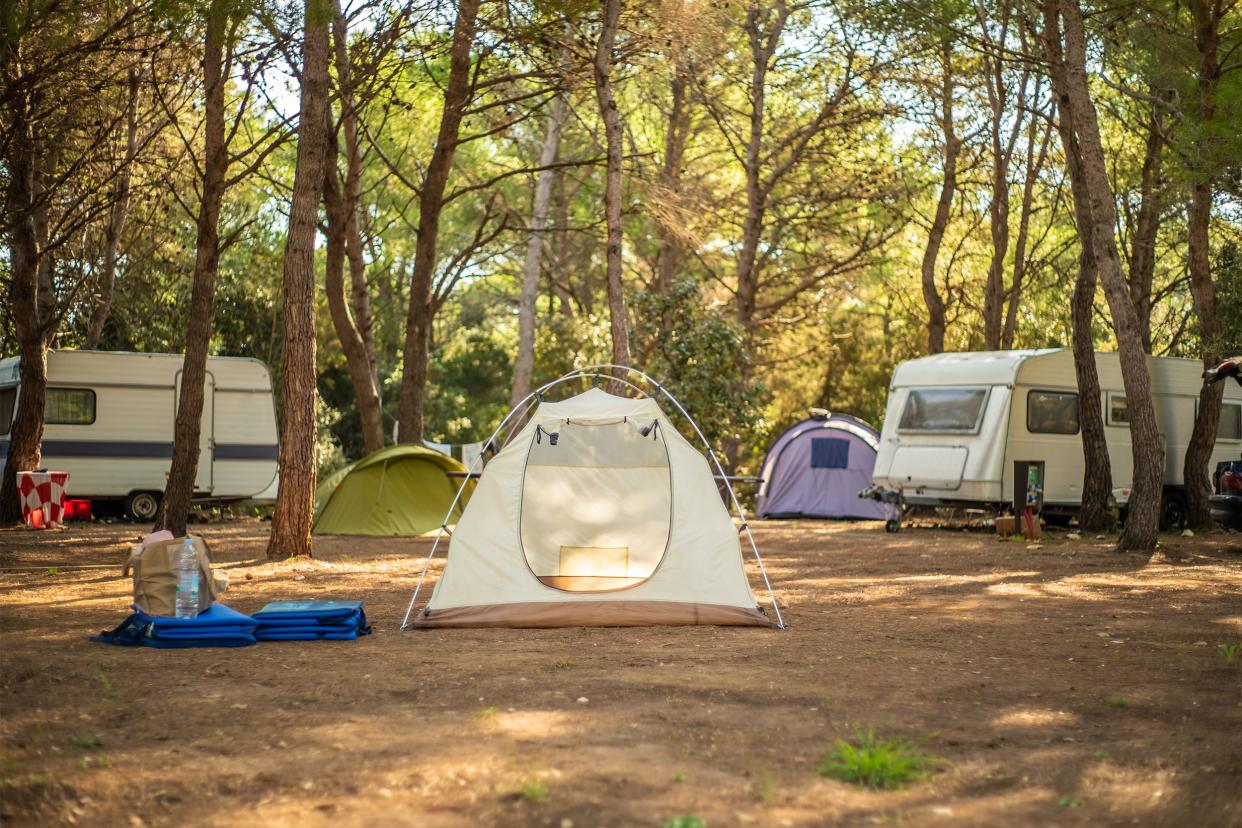
10. RV Vacations Are More Environmentally Friendly
With the travel industry’s impact on climate change being a key topic of discussion these days, it might be comforting to know that an RV vacation can be more environmentally friendly than flying or driving and staying in a hotel. A study produced by PKF Consulting found that a family of four taking an RV vacation generates a smaller amount of carbon dioxide than a family that opts to fly to their destination, where they rent a car and stay at a hotel.

11. Many RVers Are Adding Solar Panels
Given their love of the great outdoors, it should be no surprise that some RVers have taken extra steps to reduce the environmental impact of their vehicles. Go RVing says that nearly 20% of RVers use solar panels to run some of their on-board systems. While there are some downsides to solar, one huge benefit is that many RVers qualify for a solar tax credit.

12. Fido Can Join for the Journey
RV camping is a family affair, and that includes the family pet. In addition to the 90% of owners who agree that RVs are the best way to travel with kids, more than half (54%) bring their pets along with them on RV vacations.
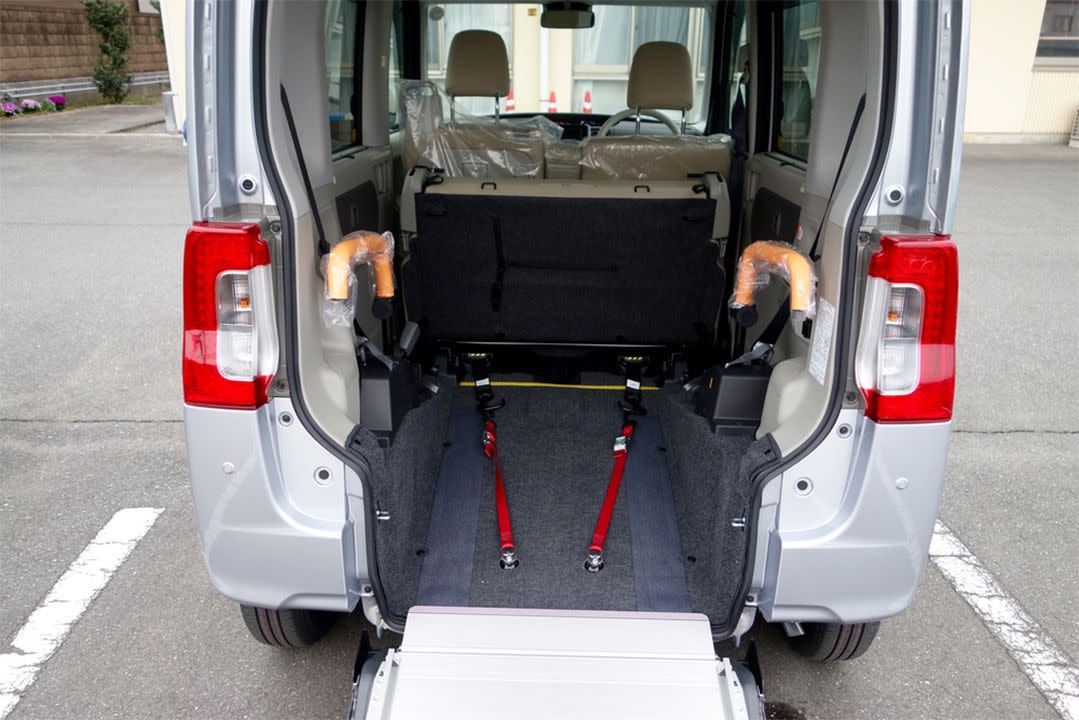
13. RVs Can Accomodate Disabled Travelers
RV design has come a long way over the years and is now able to accommodate disabled travelers. Various RV makers will provide modifications before delivery of a vehicle — everything from wheelchair lifts or ramps to widened entrances and interior pathways. Manufacturers can also create lower kitchen counters and cabinets and roll-in showers.
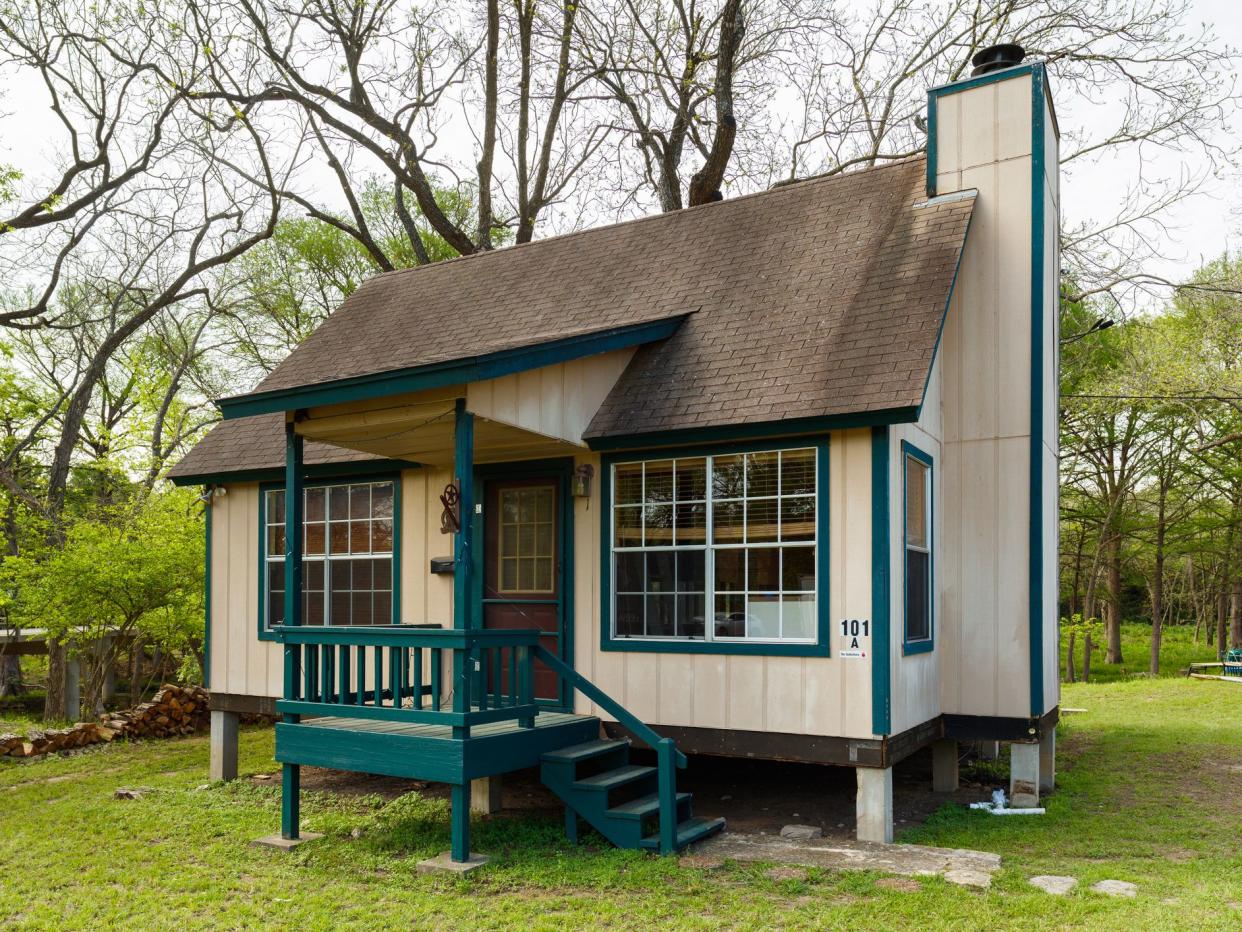
14. Park Model RVs Look More Like Homes
Another evolution of the industry over the years — park model RVs, for those who want an RV that looks more like a traditional cottage or home. These unique creations bear no resemblance to an old-fashioned RV — imagine your summer cottage on wheels. But like traditional RVs, they require being hooked up to electricity, sewer, and water. Park model RVs, which are aimed at those who like to stay in one camp for an entire season, are under 400 square feet, range in price from $35,000 to $80,000 and can sleep up to 10 people. Hauling one of these homes, however, must be intimidating to say the least.
Related: 30 Biggest Mistakes of First-Time RV Drivers
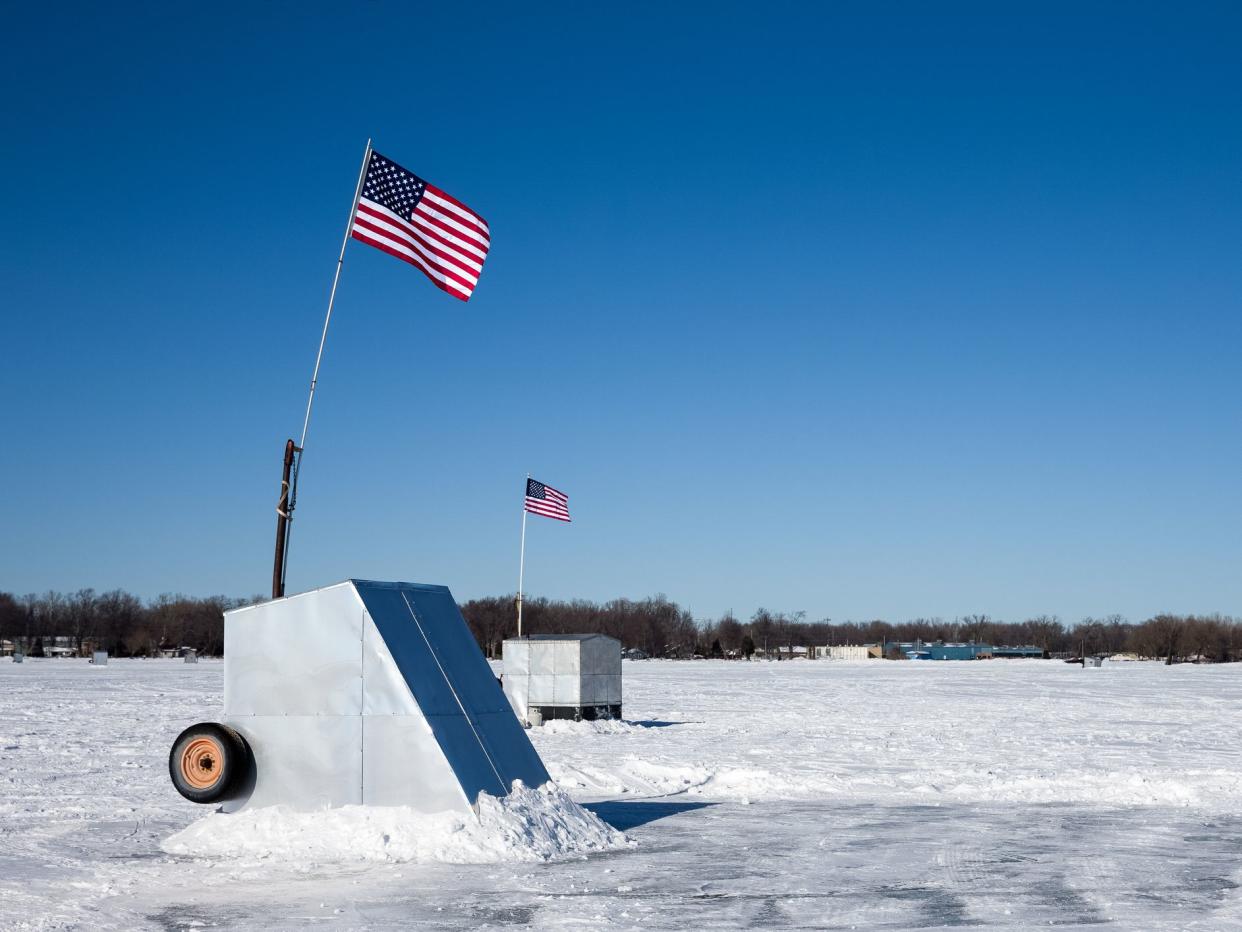
15. RVs Can Even Serve as Ice-Fishing Houses
It seems there’s no end to the ways RVs can be customized. For those who love fishing in sub-freezing temps, a customized fish house RV may be the best approach to staying warm. These vehicles, which range in size from 6 to 30 feet, and in price from $5,000 to $30,000, according to Go RVing, are designed to be lightweight so that they can be towed onto the ice with an ATV. And banish images of some spare tin shelter. An RV fish house includes such creature comforts as heat, kitchens, bathrooms, beds, and satellite television. All that and, at the end of the day, you can fry your fish up on the RV stove.
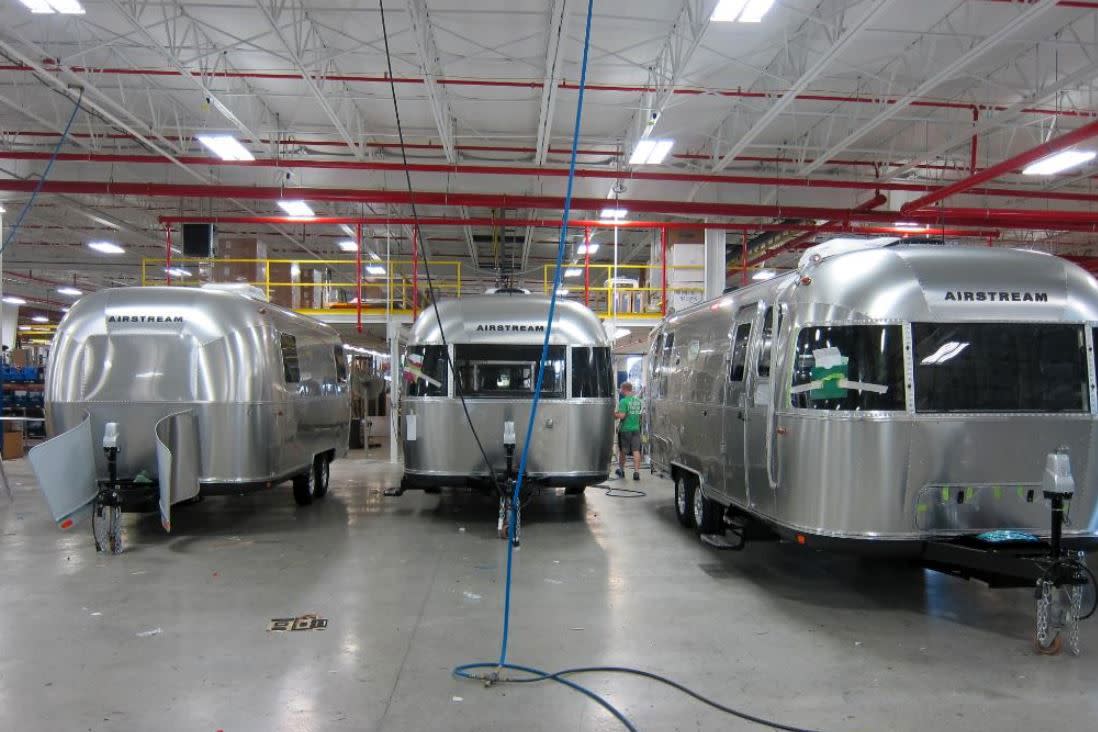
16. Most RVs Sold in the U.S. Are Made Here, Too
An RVIA report also found that a full 98% of the RVs bought in the United States were made here. Of the more than 100 manufacturers in business, most are, in fact, based in the U.S.

17. Indiana Produces the Most RVs in America
Of all the states in the country, Indiana leads the nation in RV production and manufacturing, according to the RV Industry Association. Nearly 87% of all the recreational vehicles made in this country come from the Hoosier state. Elkhart, Indiana, is widely viewed as the industry capital, where about 65% of recreational vehicles in the U.S. are made.
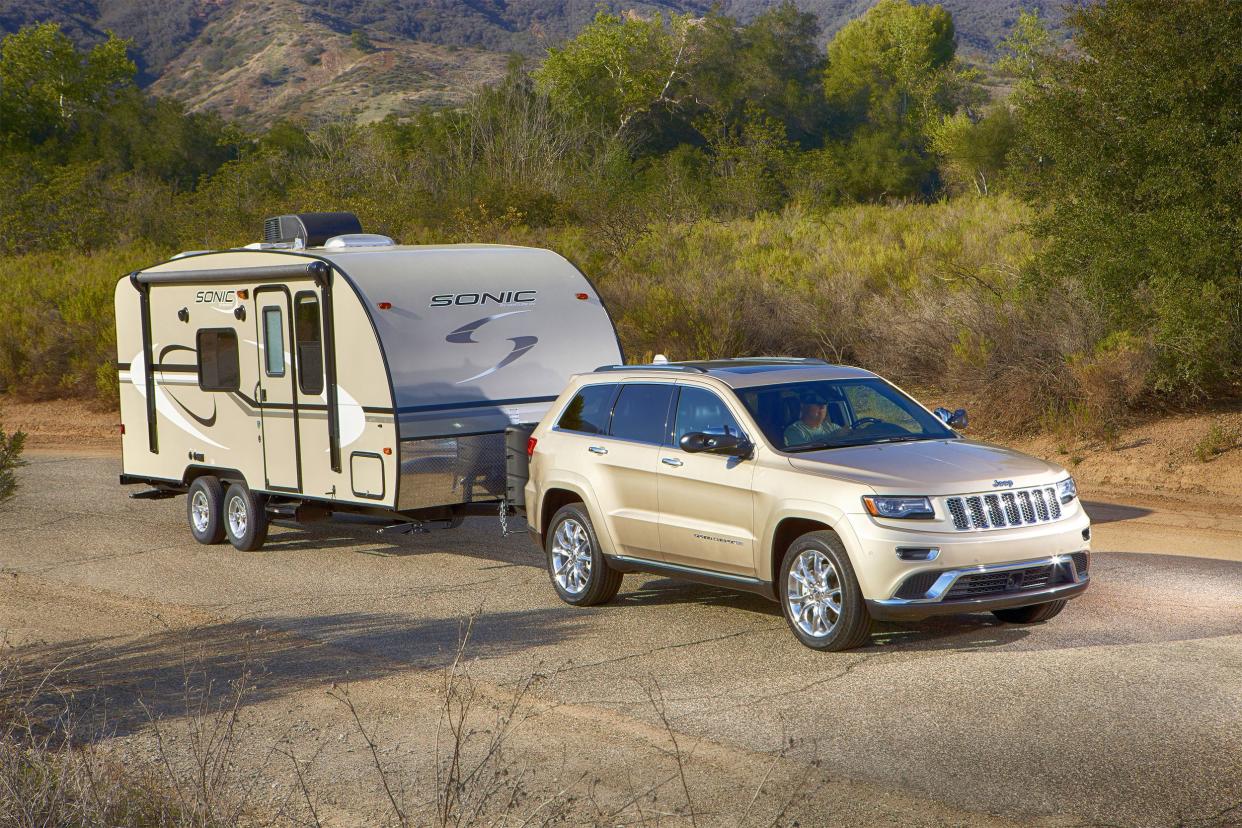
18. Towable Units Are Most Popular
The largest portion of the RV market is made up of towable units, according to the RVIA. From the start of 2021 through August, 359,519 towable campers were shipped, a figure that represented 53.8% growth over 2020. Also, according to the RVIA, about 12% of RVs on the market are motorized, while 88% are towables.
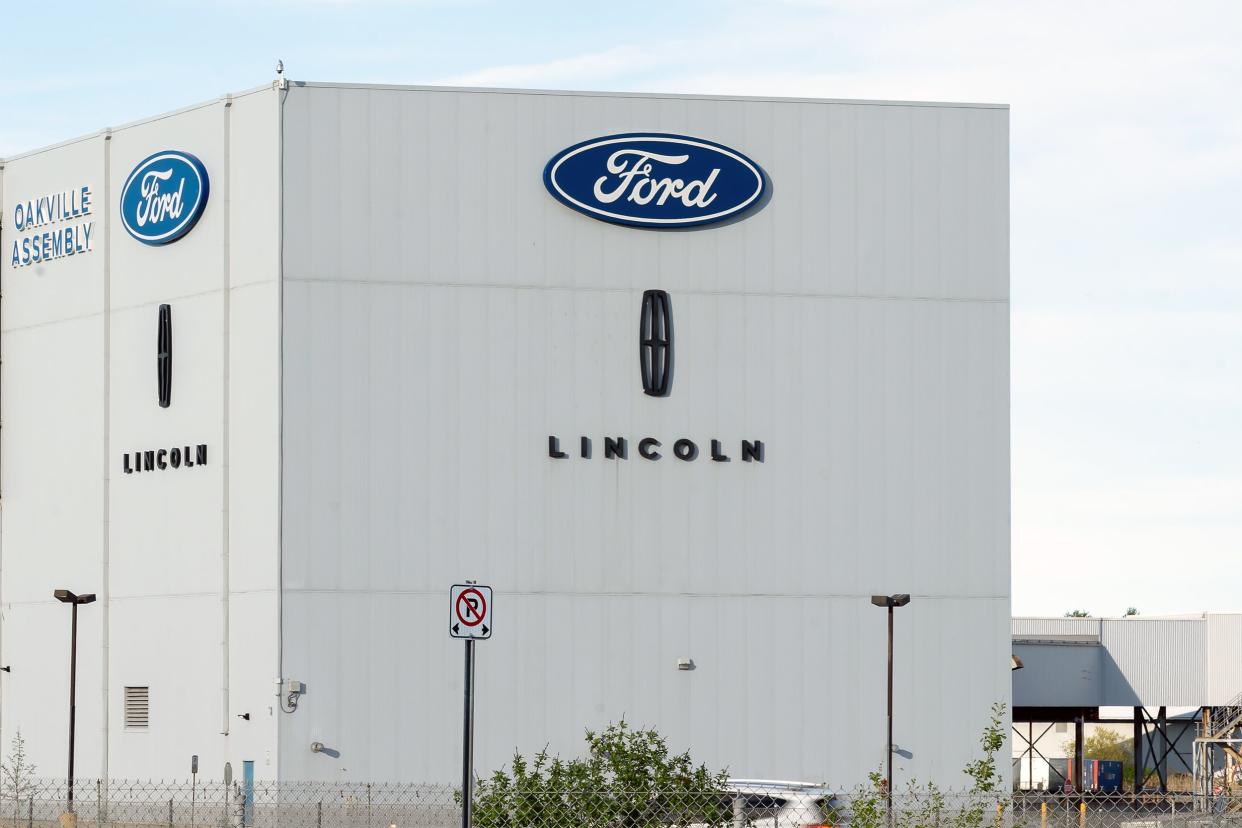
19. Automakers Also Play a Role in RV Manufacturing
While there are plenty of well-known companies that specialize in manufacturing RVs, Ford Motor Co. also has a part to play in the creation of these vehicles. It makes the chassis, engines, and transmissions for most of the motorhomes bought in this country.
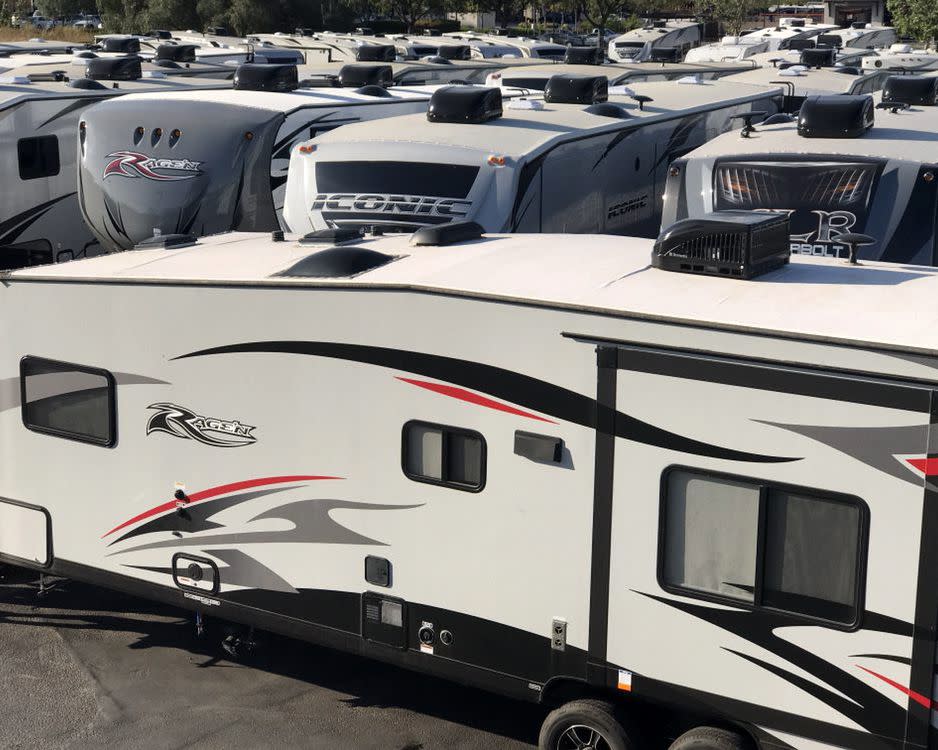
20. There are Thousands of U.S. Dealerships
Throughout the United States, Wandering RV reports that there are about 2,700 dealers selling RVs who manage about $26 billion in revenue annually. These dealers also create about 51,000 jobs. Camping World is the nation's largest dealer, with more than 180 locations across 40 states.
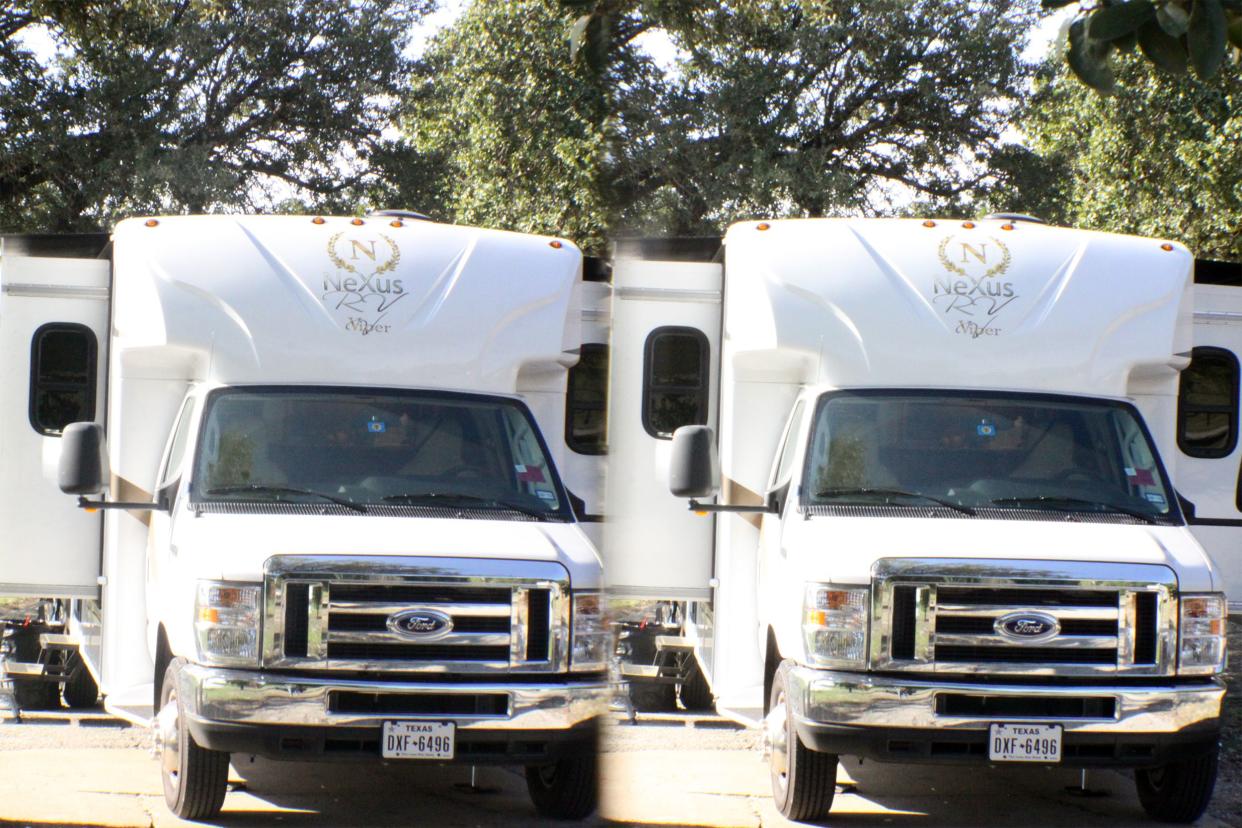
21. California Is Where the Most RVs Are Shipped
The Wandering RV shows that California has the highest RV sales by state ($2.4 billion, followed by Texas ($1.8 billion) and Florida ($1.5 billion).
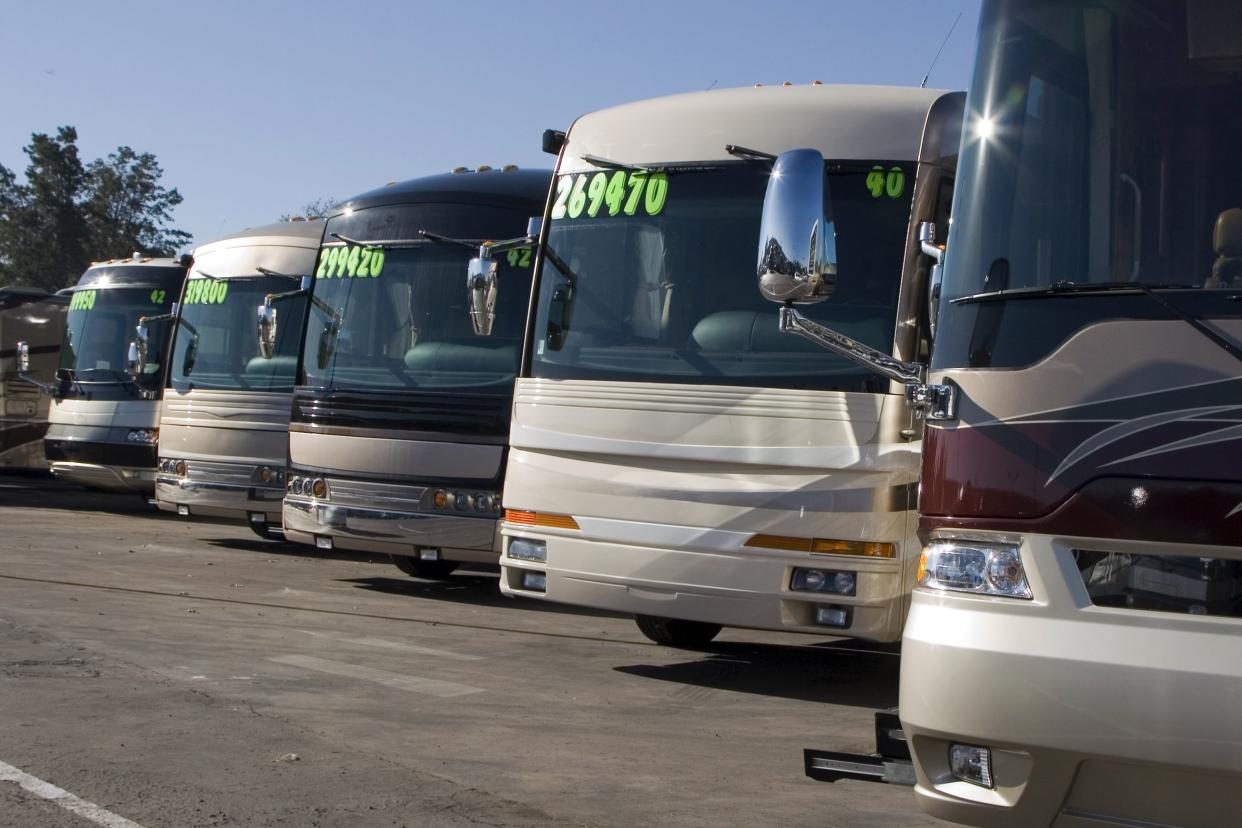
22. Five Countries Dominate Exports
A mere five countries account for the vast majority of RV exports from the United States, says Wandering RV. Our neighbor to the north, Canada, accounts for the lion’s share of the market, annually taking 90% of industry exports. Retail sales in Canada amount to more than $6 billion annually, according to the report. After Canada are Mexico, Australia, the United Kingdom, and China.
Related: 10 Countries Where They Love RVs as Much as Americans Do

23. Many RV Buyers Rely on Loans
Though used models and simpler models can certainly be found, RVs are not necessarily cheap. Given that reality, more than 200,000 indirect loans were provided at retail locations that sell RVs, according to the Wandering RV’s report, totaling about $8.4 billion.
Related: 25 Mistakes to Avoid When Buying an RV

24. The Industry’s Economic Impact Is Far-Reaching
As part of the RV industry's annual overall economic impact on the U.S. economy, the RVIA reports that the industry supports nearly 680,000 jobs and 30,363 businesses, and contributes more than $48 billion in wages. It also pays in excess of $13 billion in taxes (federal, state, and local). That $140 billion impact is broken down between RV manufacturers and suppliers ($74 billion); RV sales and services ($31 billion) and RV campgrounds and travel ($36 billion).

25. A Few States Lead the Pack for Economic Impact
Given that it is the home of the RV industry, it should come as no surprise that Indiana leads the pack, at $32.4 billion, when it comes to total direct economic impact (which includes RV manufacturers and suppliers, sales and service, and campgrounds and travel). California has an annual impact of $8.8 billion, and rounding out the top three is Texas at $6.9 billion.
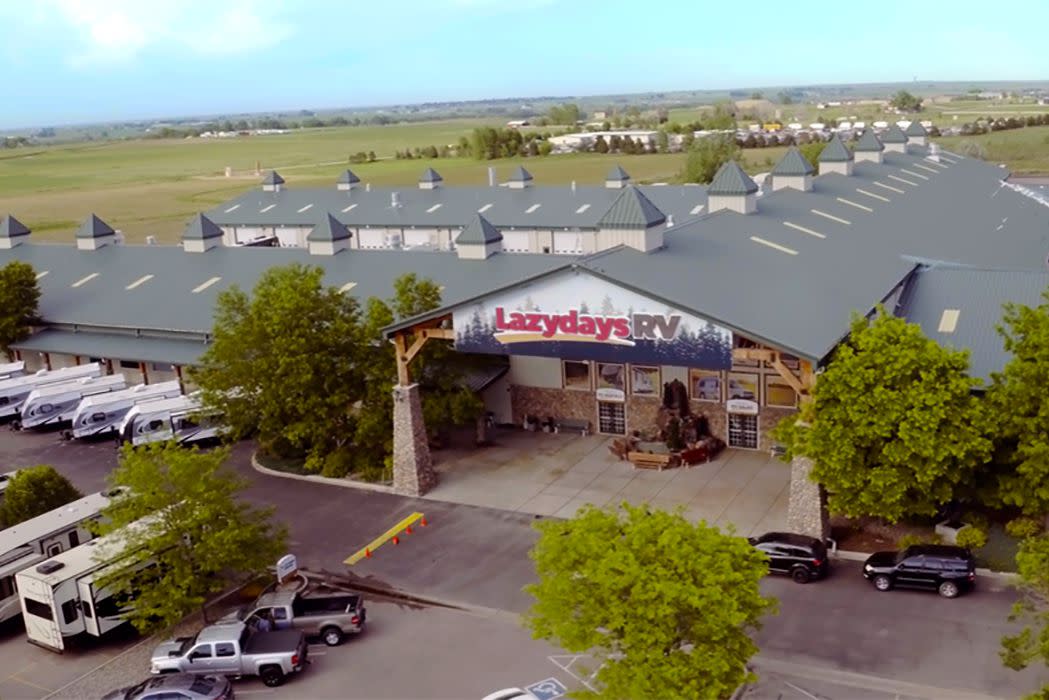
26. The RV Industry Supports Local Economies and Jobs
Even on a more local level, the RV industry is a force to be reckoned with. In Colorado, for instance, it has a $1.4 billion annual economic impact. That materializes in a variety of ways. RV manufacturers and suppliers in the state, for example, realize a $384.9 million annual economic impact, while $556.6 million goes to RV sales and services, and $496.1 million is taken in by RV campgrounds and travel companies. Also in Colorado, the RV industry supports 9,752 jobs and provides $491.7 million in wages. About 11,105 RVs are shipped to the state each year.
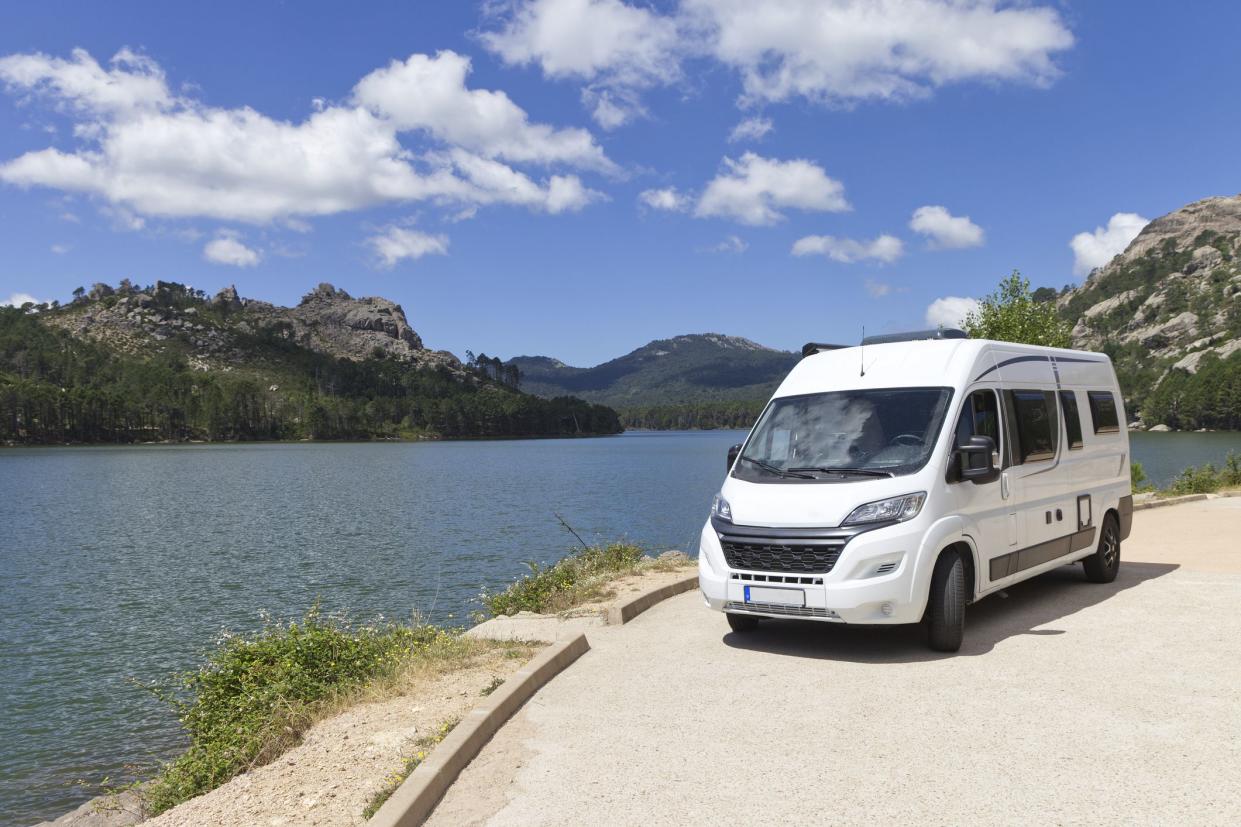
27. Interest in Motorized RVs is Surging
Although most RVs bought are still towable, Class B motorized RV sales have surged. Many travelers consider the Class B models to be easier to drive and overall more convenient, especially in a pandemic era. Younger, first-time buyers are reportedly behind the surge with their embrace of a more “van life” approach to RVing.
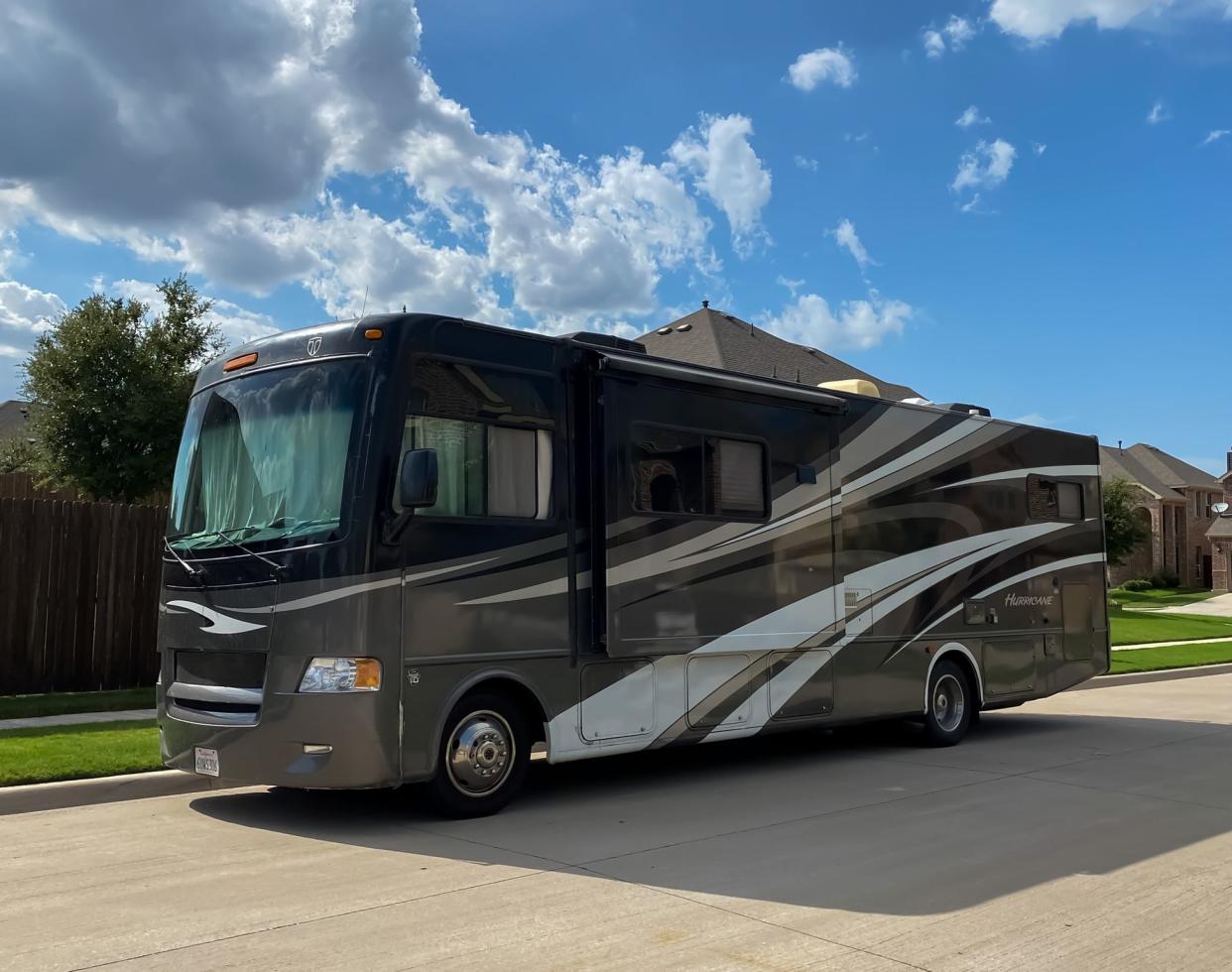
28. Many New RVers Plan to Upgrade
According to the KOA report, 52% of new RVers report wanting to upgrade their rig. Many may have started out with lower-cost models as a way to “test the waters.” Many RVers report wishing they had known more before buying their first RV.

29. RV Vacations Can Be a Way to Save Money
According to reports from the RVIA, an RV vacation can save a chunk of change. Compared with a traditional vacation, RV trips can be more than 60% cheaper than a stay offering similar accommodations. The convenience of having all your own supplies (and your own bed to sleep in) is also not lost on RVers.
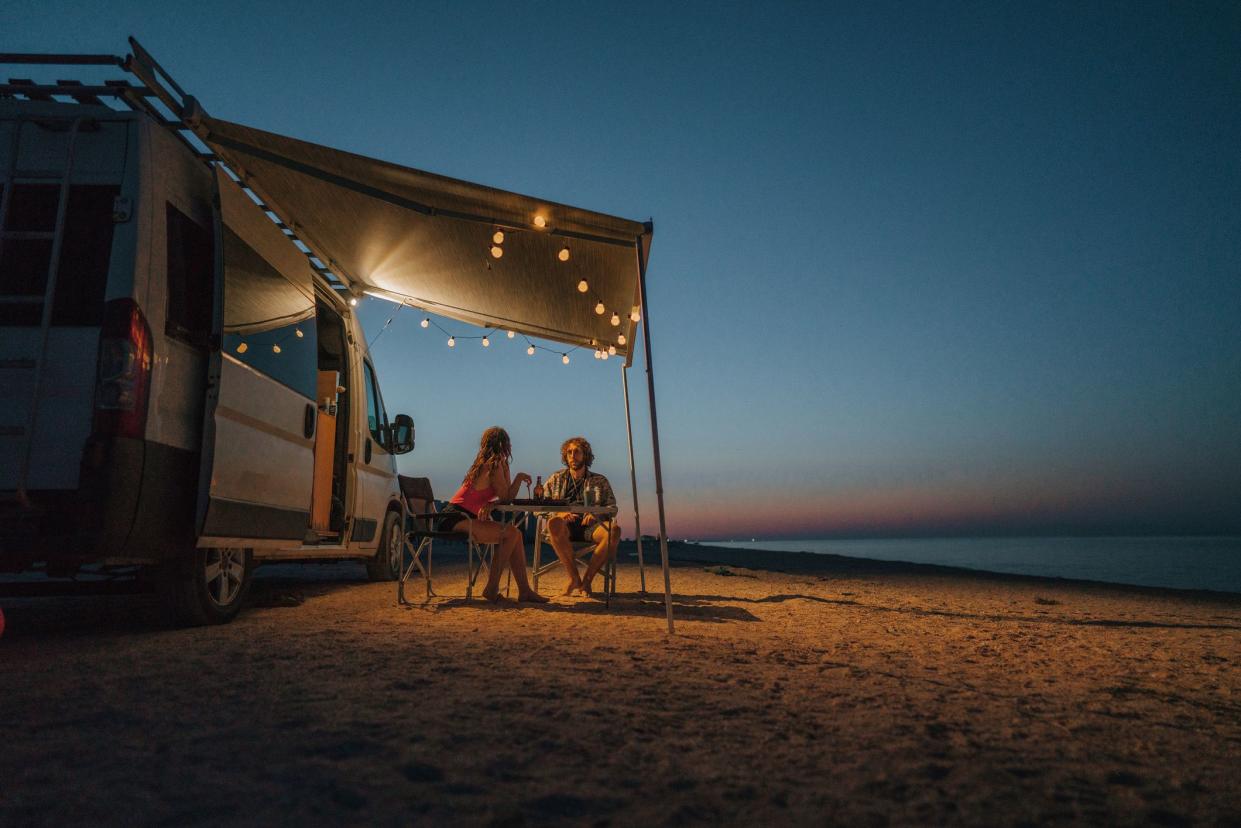
30. Some RVers Take Their Rig Off the Beaten Path
Most RVers enjoy the glamping experience, with half of first-time campers reporting such an experience in 2020. But 30% of all RVers report camping outside of traditional campground or RV parks. This could include boondocking (which involves camping for free on public lands) or stopping at Walmart parking lots or the like during a cross-country trip.
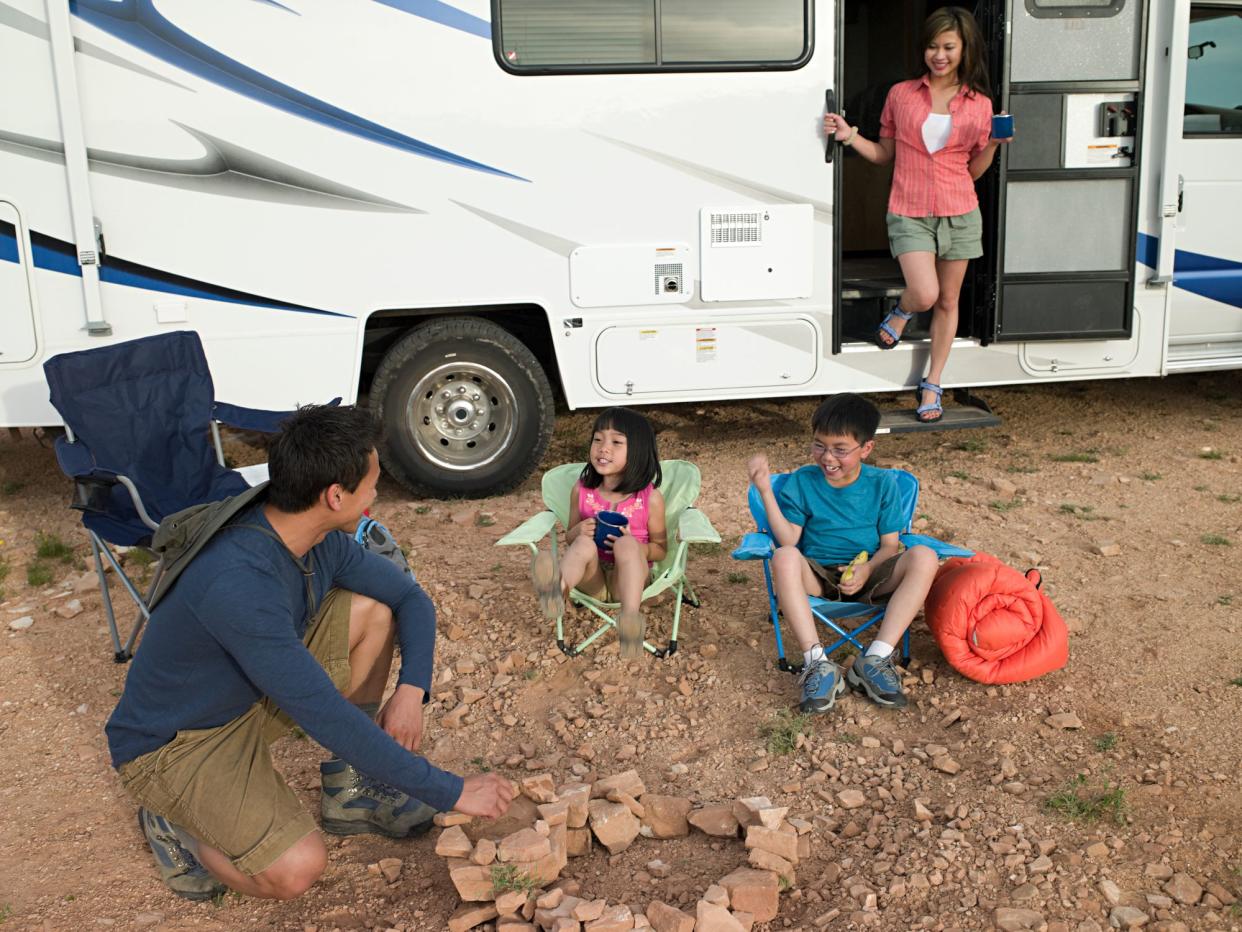
31. Campers are More Diverse Than Ever
There was a surge in new campers in 2020, and it represents a more diverse group than ever before. According to KOA, nearly 60% of new campers are under 40, with three-fourths of all new camping households having children. Six in 10 are from nonwhite groups, and one in four is black.
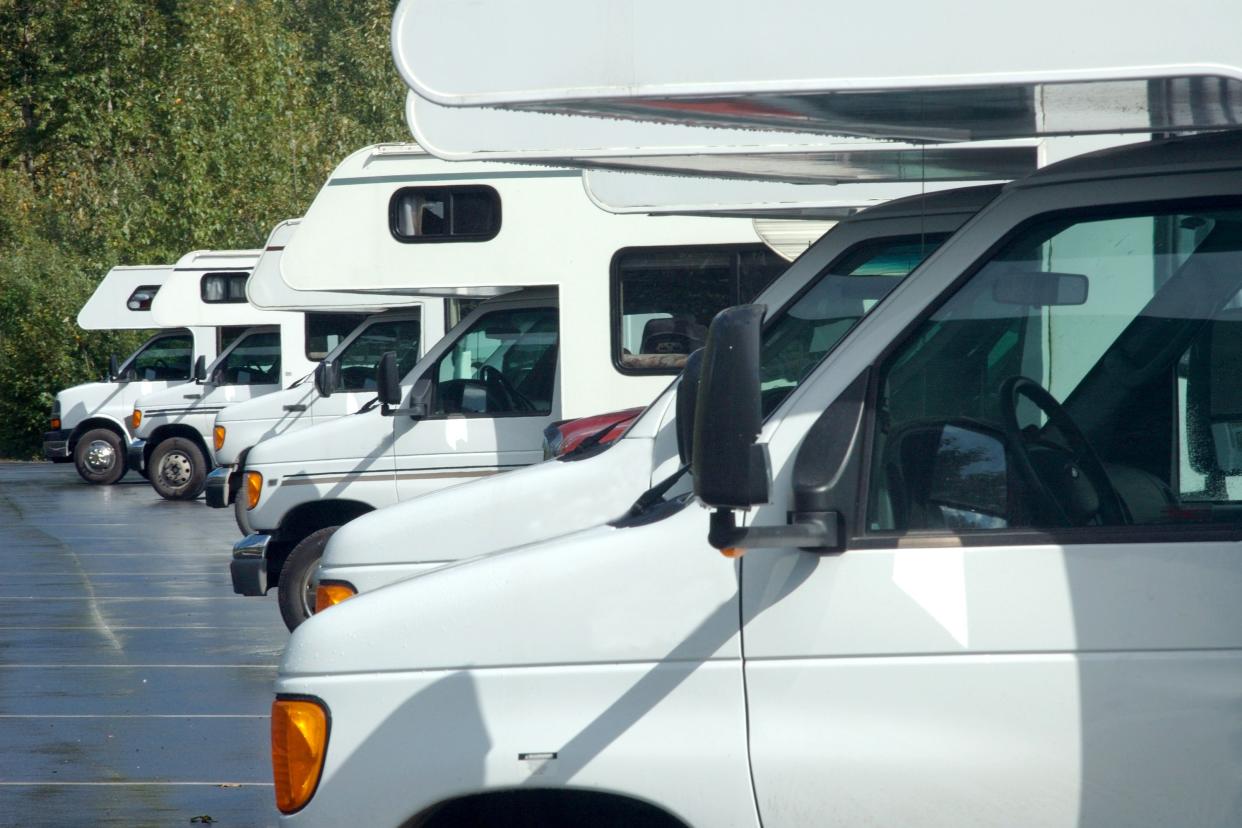
32. Many People Are Also Opting to Rent RVs
According to RVshare’s Travel Trends Report, of all those who rented in 2020, nearly 80% were new to the rental platform. Another RV rental company saw a surge of 1,500% from its lowest booking day to the highest during the pandemic. According to market research company Mordor Intelligence, the RV rental industry was valued at $642 million in 2021, but growth from last year to 2029 is expected to reach 8%.
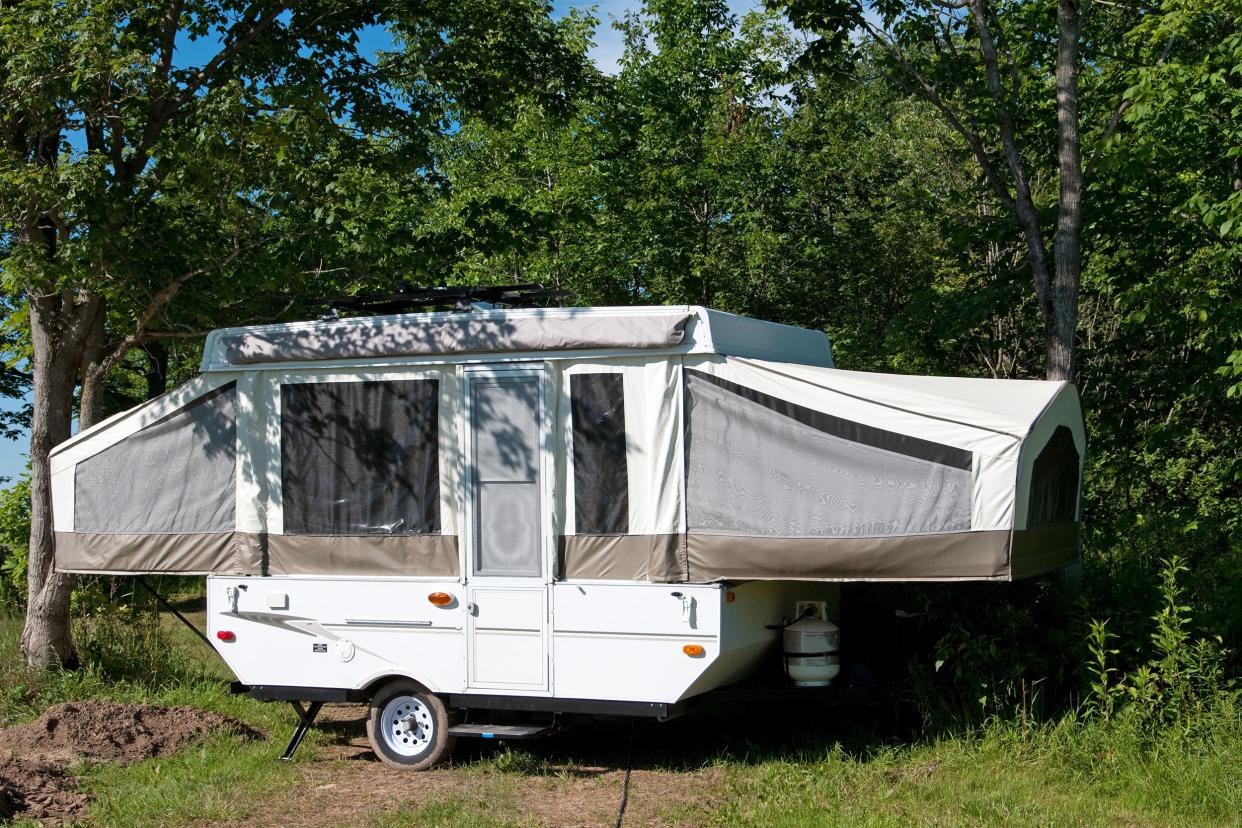
33. Average RV Price Varies Widely By Style
Average RV prices can range from $5,000 to more than $140,000 new, the RVIA says. Some price tags even stretch into the millions of dollars, although this isn’t average. The cheapest type of RV tends to be folding camping trailers, commonly called pop-ups; Class A motorhomes, which have the buslike front windshield, are typically the most expensive.

34. There Are Many Different Types of RVs
Many people think of motorhomes, travel trailers, and fifth wheels. But did you know there are many more RV types? There are four types of motorhomes, including Class A, Class B, Class C, and the lesser-known and super fancy Super C. Towable RVs include conventional travel trailers, toy haulers (designed for transporting ATVs, motorcycles, and the like), travel trailers with expandable ends, folding or pop-up trailers, and fifth wheels. Then there are park model RVs and, becoming more common, towable tiny homes often built by their owners. You also can’t forget about truck top campers.
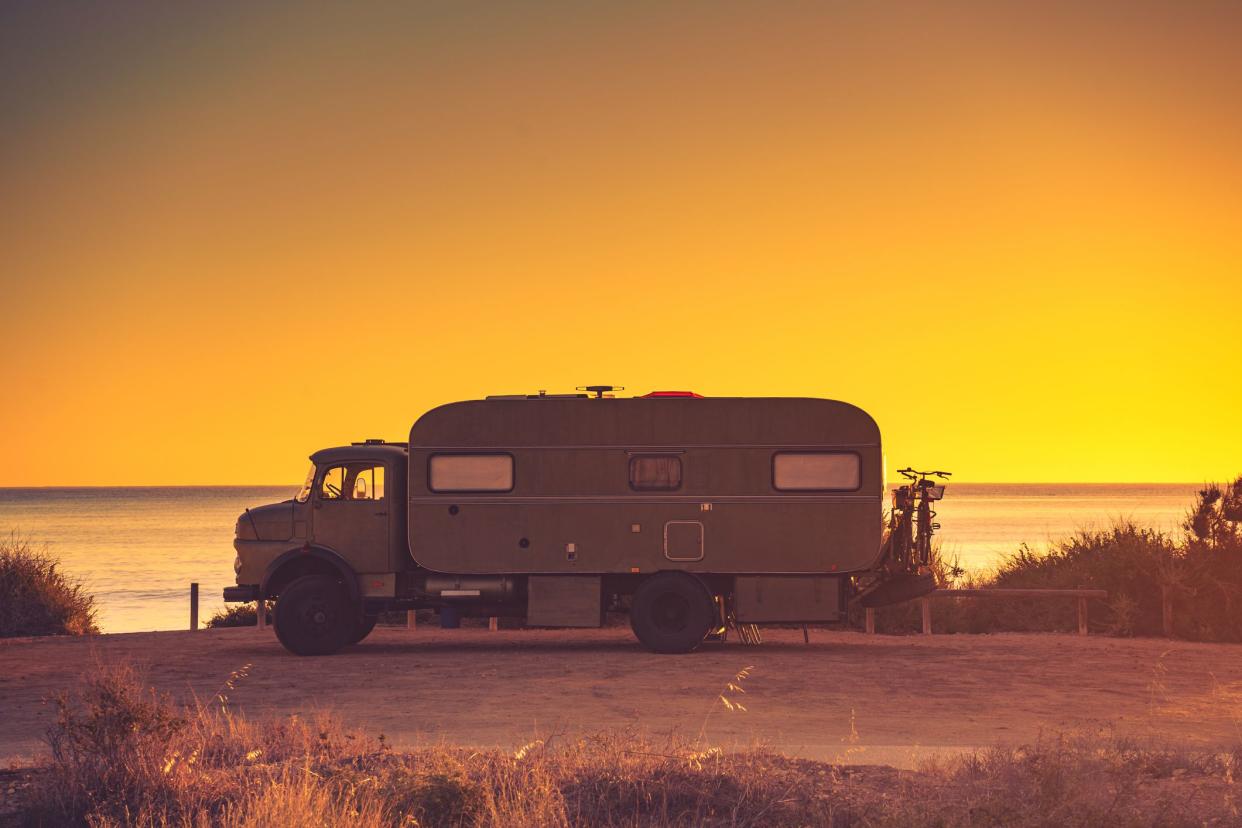
35. Some Campers Don’t Stop at Traditional RVs
RVers are a creative bunch, and you may find them in all sorts of custom conversion RVs. You never know what you might find when you’re on the road: conversions of horse trailers, delivery trucks, utility trailers, and even school buses, fondly referred to as Skoolies, are among the less traditional vehicles out there.
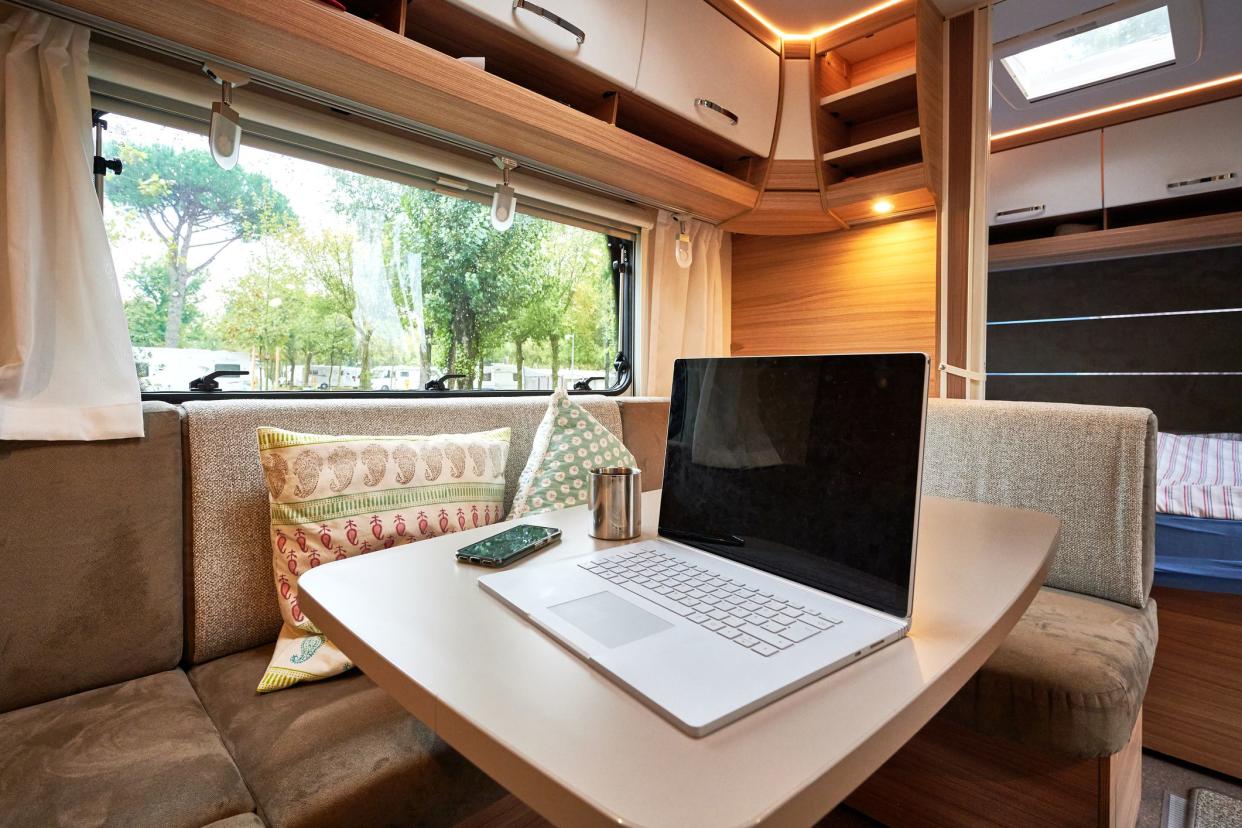
36. Many RVers are Embracing Remote Work
Retiring and traveling the country in an RV is the dream of many as they near retirement. But many aren't waiting. The pandemic caused skyrocketing growth in remote work — and RV wannabes. The demand was so high, the popular Escapees RV Club hosted a virtual conference focused on remote work. More than 3,000 people attended the five-day event.
